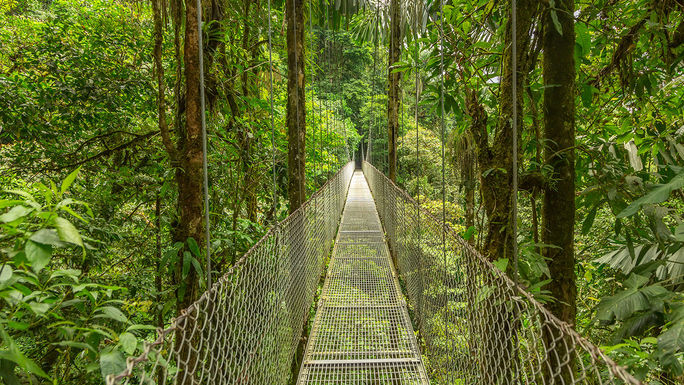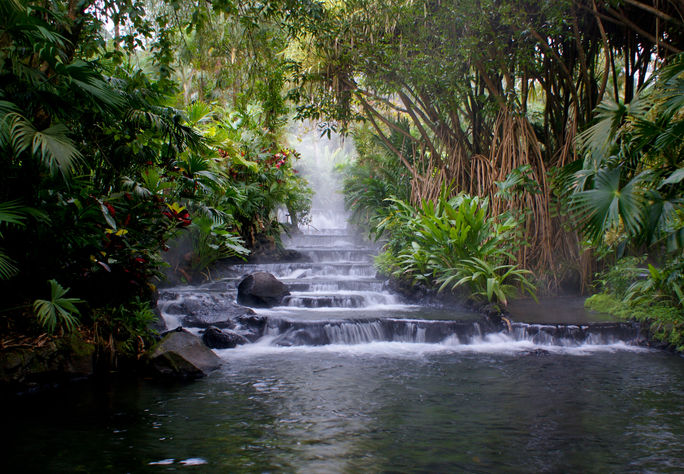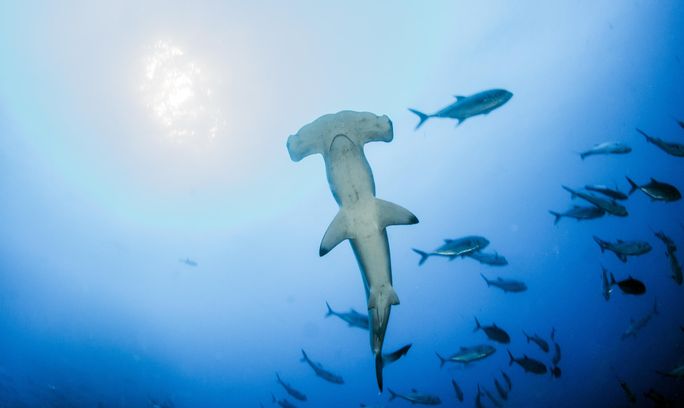
PHOTO: Hanging bridge in Costa Rica (Photo via DmitriyBurlakov / iStock / Getty Images Plus)
Travel is more than a consumer product; it is a resource and a necessary experience. It is a resource and an occasion for people that allows them to open up to others, meet, understand the world, and know themselves.
That is why we will never stop traveling, but we will change how we do it. And it is necessary to take care of the planet. Something that Costa Rica has done well.
Costa Rica is one of the most ecological countries on the planet, and for years it has had a concept of travel integrated with nature that has become an emblem of ecotourism. The recovery of the tourism sector involves implementing sustainable models following the Costa Rican example.
Sustainability is not only a practice in Costa Rica but a way of life. Responsible tourism is found in every region of the country, permeates government policies even in different administrations, and is embraced by citizens and visitors, making the country one of the most sustainable destinations in the Americas.
William Rodríguez, Minister of Tourism of Costa Rica, pointed out that they are clear that the raw material to have a more significant activity of travelers is nature, so they must take care of it and not dilapidate it. "We have to respect."
Pura Vida Life
Rodríguez explained in an exclusive interview with TravelPulse that "the concept of conservation has two parts: one is to keep things as they are, and at the same time serve for research and conservation. And the other part is for enjoyment, without devastating."

Hot spring waterfall near Arenal Volcano in Fortuna, Costa Rica. (photo via iStock / Getty Images Plus) (Photo Credit: (iStock / Getty Images Plus))
How? Separating a specific area so it can be visited and the rest to keep it isolated from tourism. The park with the most open area to the public is 7 percent, and the remaining 93 percent is untouchable and kept in conservation. "On average, our parks maintain between 4 and 5 percent of areas open to the public. The secret of growing green areas and offering sustainable tourism is to keep most of them closed and in their natural state."
The minister mentioned how Costa Rica had set the example of not deforesting but reforesting and went from having a 25 percent green area to 56 percent. Today, tourism generates 8.1 percent of the Central American country's GDP, and the minister recognizes that it brings benefits and social and economic progress in areas where traditional industry has yet to reach.
Rodríguez affirmed that the sustainability aspect in Costa Rica is focused on environmental, social, and economic factors. "With those criteria, we have sold the country in terms of tourism, and we have been successful, which is why we are launching this new promotional campaign."
"It is not the same thing to sell attractiveness, but the experience that we can generate to the foreign traveler and thus enrich their leisure or family trip,” he said.
Effort Recognized
Costa Rica, a pioneer in sustainability and safe ecotourism, received the Champions of the Earth award, the United Nation's highest environmental award, for its role in protecting nature and its commitment to combating climate change.

PHOTO: Hammerhead shark at Cocos Island, Costa Rica. (photo via Divepic/iStock/Getty Images Plus)
It is time for the sector to reinvent itself towards a model that puts an end to the social and environmental consequences of overcrowding. In the new reality, one of the gestures that will change the most is the way of traveling; Costa Rica is in a privileged position because of all the roads it has already traveled and stands as a model of the new tourism.
Costa Rica has developed a detailed plan to decarbonize its economy by 2050, in line with the Paris Agreement and the UN Sustainable Development Goals. With this initiative, the country hopes to pave the way for other nations to curb greenhouse gas emissions, which cause climate change and its devastating effects. Costa Rica's success in placing environmental concerns at the center of its political and economic strategies proves that sustainability is achievable and economically viable. So, if protecting the planet is one of your priorities, you won't find a better destination.
Where to start? Costa Rica has it all: it is home to 6.5 percent of the world's biodiversity. In this paradise of just over 51,000 square kilometers—slightly larger than Aragon—there are more than 230 species of mammals, 850 species of birds, and 12,000 types of plants. In addition, the traveler will find the quality of its beautiful beaches, an average annual temperature between 20 and 27 degrees, and a tourism model that promotes the local economy and favors the reinsertion of animal species in their natural habitat. These are some proposals to live a unique experience in Costa Rica.
Rodriguez promoted tourism in Costa Rica with the famous phrase:
- Pura Vida, which can be heard from the moment you get off the plane in Costa Rica, Pura Vida can be smelled in the cup of a dripping coffee.
- Pura Vida can be felt in the magnitude and magic of the tropical and cloud forests.
- Pura Vida can be tasted in gallo pinto, a fresh ceviche, or in the freshness of its fruit.
- Pura Vida is a modus vivendi seen in the Nicoya Peninsula, one of the world's Blue Zones, with people over 100 years old.
For this and much more, we proudly say that Costa Rica is Pura Vida and is with open arms to welcome tourists all year round.
For the latest travel news, updates and deals, subscribe to the daily TravelPulse newsletter.
Topics From This Article to Explore